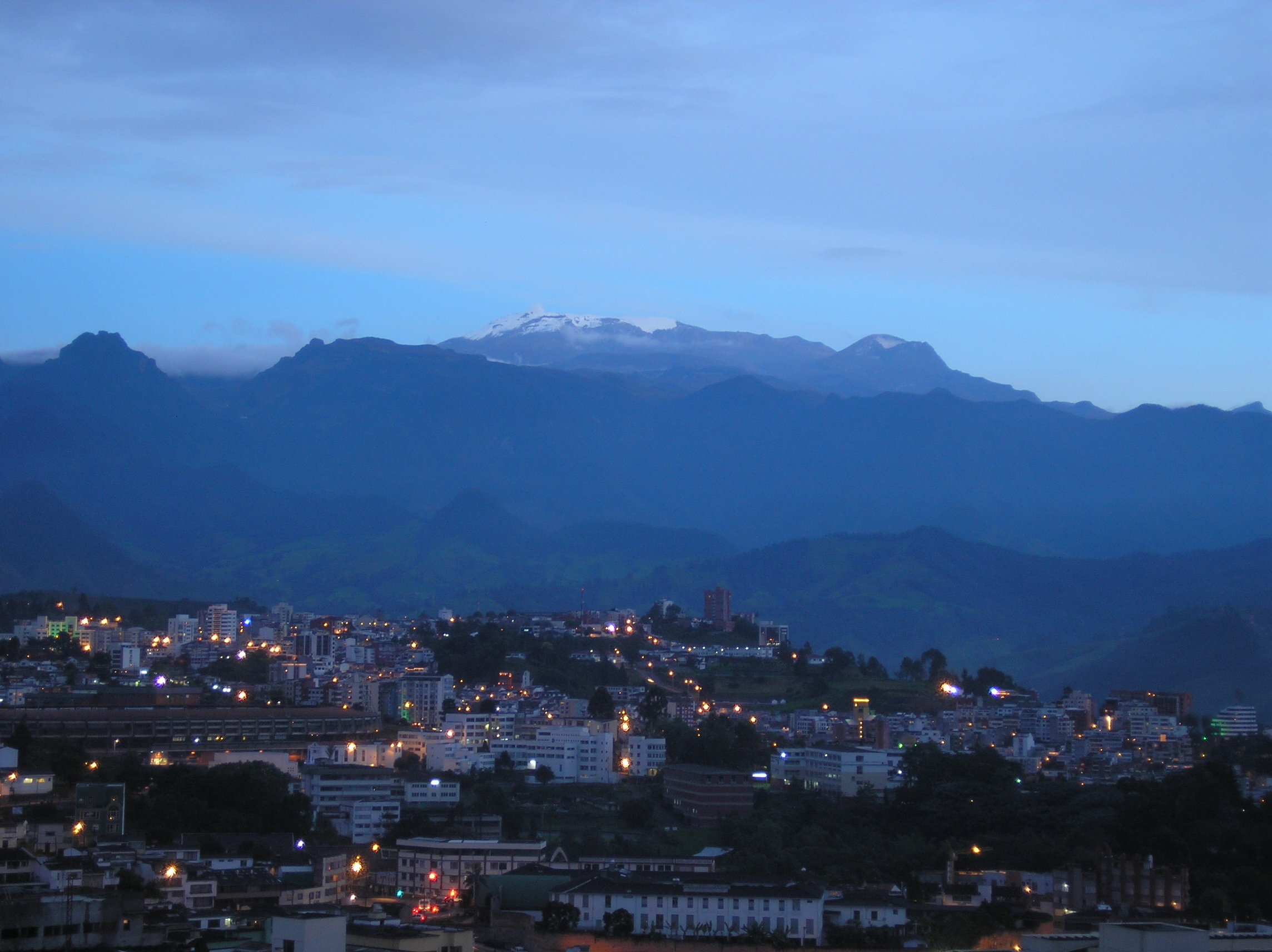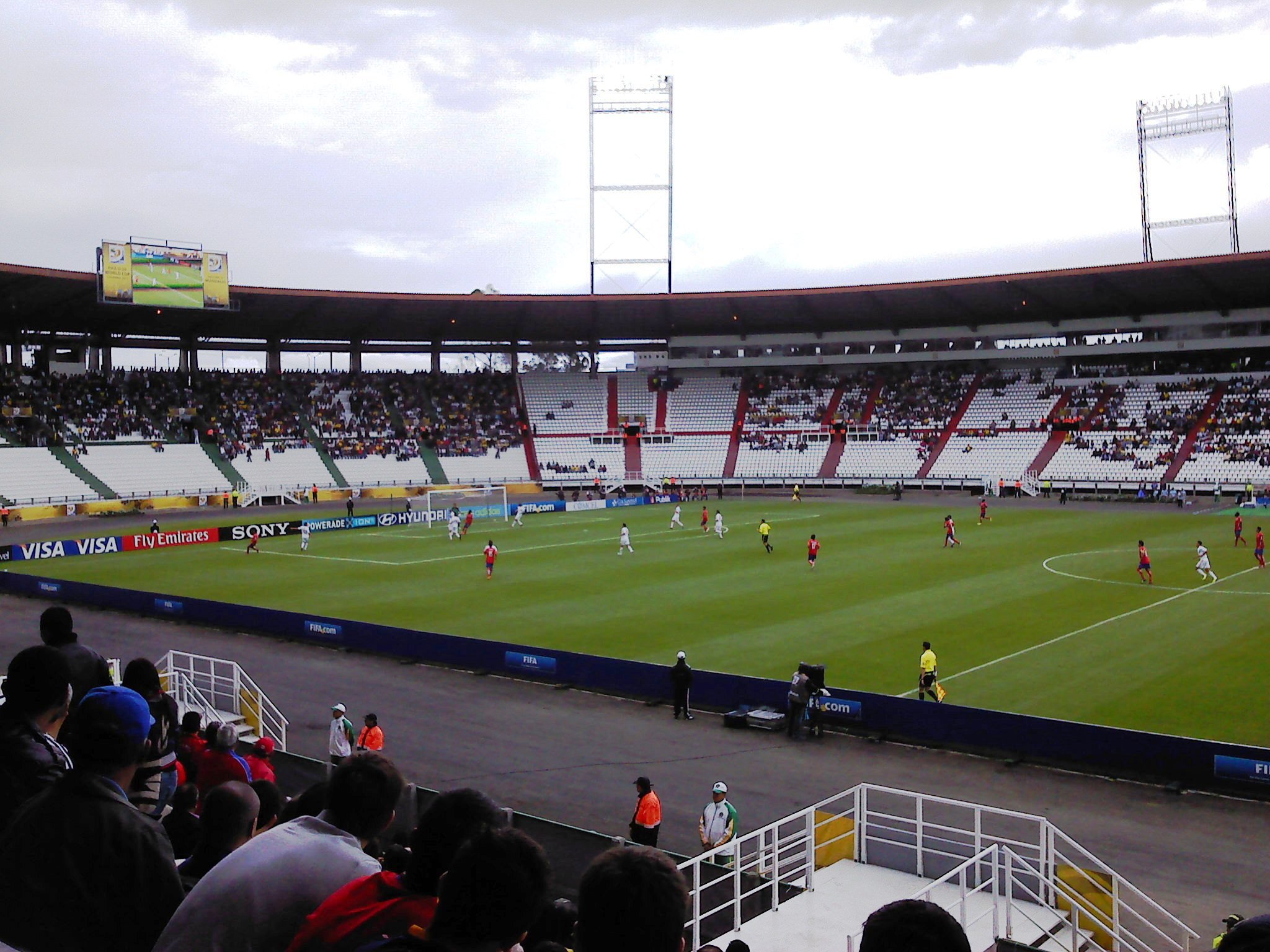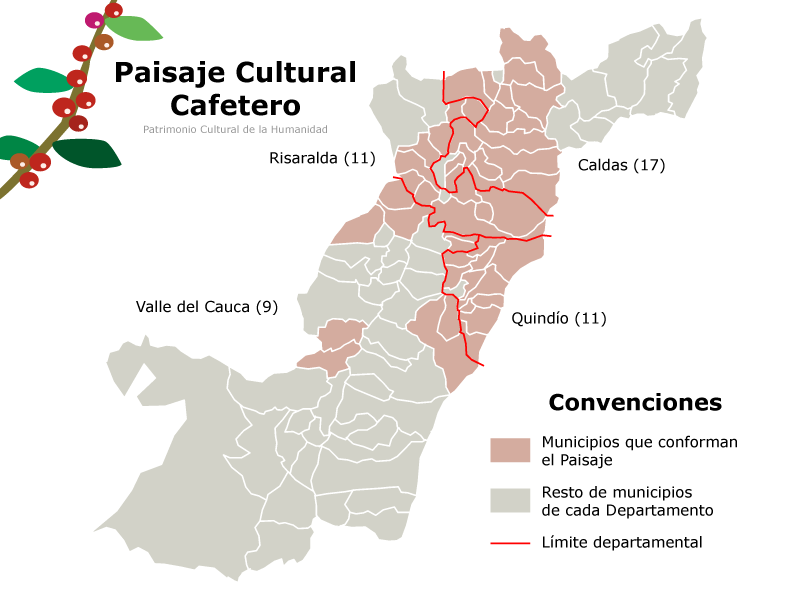|
Manizales
Manizales () is a city in central Colombia. It is the capital of the Department of Caldas, and lies near the Nevado del Ruiz volcano. Currently, the city is the main center for the production of Colombian coffee and an important hub for higher educational institutions. History Manizales was founded on October 12, 1849. The city was founded by a group of twenty Antioquians (''The Expedition of the 20''), who came from Neira and Salamina. Geography Manizales is the capital city of one of the smallest Colombian departments. The city is described as having an "abrupt topography", and lies on the Colombian Central Mountain Range (part of the longest continental mountain range, the Andes), with a great deal of ridgelines and steep slopes, which, combined with the seismic instability of the area, has required architectural adaptations and public works to make the city safer. Even though Manizales has this very difficult topography, there are many coffee plantations in its fertile l ... [...More Info...] [...Related Items...] OR: [Wikipedia] [Google] [Baidu] |
Nevado Del Ruiz
The Nevado del Ruiz (), also known as La Mesa de Herveo ( en, Mesa of Herveo, the name of the nearby town) is a volcano on the border of the departments of Caldas and Tolima in Colombia, about west of the capital city Bogotá. It is a stratovolcano composed of many layers of lava alternating with hardened volcanic ash and other pyroclastic rocks. Volcanic activity at Nevado del Ruiz began about two million years ago, since the Early Pleistocene or Late Pliocene, with three major eruptive periods. The current volcanic cone formed during the present eruptive period, which began 150,000 years ago. The volcano usually generates Vulcanian to Plinian eruptions, which produce swift-moving currents of hot gas and rock called pyroclastic flows. These eruptions often cause massive lahars (mud and debris flows), which pose a threat to human life and the environment. The impact of such an eruption is increased as the hot gas and lava melt the mountain's snowcap, adding large quantities o ... [...More Info...] [...Related Items...] OR: [Wikipedia] [Google] [Baidu] |
Palogrande Stadium
Estadio Palogrande is a multi-purpose stadium in Manizales, Colombia. It is currently used mostly for football (soccer) matches. With renovations made for the 2011 FIFA U-20 World Cup in Colombia the stadium capacity dropped to 32,000 people. the first Palogrande was built in 1936 and then demolishd in 1993, the current Palogrande was inaugured in 1994. Once Caldas plays its home matches at this stadium and won the Copa Libertadores in 2004. External links * Colombia 2011 FIFA U-20 World Cup 2011 FIFA U-20 World Cup Stadium picture * Estadio Palogrande 1. (Inside) * Estadio Palogrande 2. (Outside) References Estadio Palogrande Sports venues completed in 1936 Football venues in Colombia Copa América stadiums Multi-purpose stadiums in Colombia Estadio Palogrande Estadio Palogrande is a multi-purpose stadium in Manizales, Colombia. It is currently used mostly for football (soccer) matches. With renovations made for the 2011 FIFA U-20 World Cup in Colombia the sta ... [...More Info...] [...Related Items...] OR: [Wikipedia] [Google] [Baidu] |
La Nubia Airport
La Nubia Airport is an airport serving Manizales, Colombia, southeast of the city's downtown. Due to its short runway and limited ramp space, the only aircraft that can use the airport are turbopropeller aircraft such as the Fokker 50, ATR 72, and Dash 8. The main problem of La Nubia airport is weather. Sometimes shut down due to fog, rain, or winds, it is difficult for airlines to offer a reliable schedule for the passengers wishing to visit Manizales and Caldas. Combined with its daylight-only hours of operation and limited runway length, La Nubia has been seen as an obstacle to the region's development. Airlines and destinations See also * Coffee Airport *List of airports in Colombia This is a list of airports in Colombia, grouped by type and sorted by location. __TOC__ Airports Airport names shown in bold indicate the airport has scheduled service on commercial airlines. Notes * The served town of Chía is located in ... References External linksOurAirpor ... [...More Info...] [...Related Items...] OR: [Wikipedia] [Google] [Baidu] |
Colombian Coffee-Growers Axis
The Colombian coffee region ( es, Eje Cafetero), also known as the Coffee Triangle ( es, Triángulo del Café) is a part of the Paisa region in the rural area of Colombia. It is famous for growing and producing the majority of Colombian coffee. There are four departments in the area: Caldas, Quindío, Risaralda and the north municipalities of Tolima and Valle del Cauca. The most visited cities are Manizales, Armenia, Pereira, and Ibagué. History of coffee Coffee was first grown commercially in Colombia in Salazar de las Palmas, north of Santander, and over the twentieth century grew to be Colombia's primary export. When coffee was first brought into the country, the leaders tried to push the farming of coffee beans, but was met with resistance from the people because it takes about 5 years until the first harvest of the bean. In 1999 coffee revenues represented 3.7% of gross domestic product (gdp) and 37% of agricultural employment. The main coffee-producing departmen ... [...More Info...] [...Related Items...] OR: [Wikipedia] [Google] [Baidu] |
Department Of Caldas
Caldas () is a department of Colombia named after Colombian patriotic figure Francisco José de Caldas. It is part of the Paisa Region and its capital is Manizales. The population of Caldas is 998,255, and its area is 7,291 km². Caldas is also part of the Colombian Coffee-Growers Axis region along with the Risaralda and Quindio departments. Subdivisions Municipalities # Aguadas # Anserma # Aranzazu # Belalcázar # Chinchiná # Filadelfia # La Dorada # La Merced # Manizales # Manzanares # Marmato # Marquetalia # Marulanda # Neira # Norcasia # Pácora # Palestina # Pensilvania # Riosucio # Risaralda # Salamina # Samaná # San José # Supía # Victoria # Villamaría # Viterbo Viterbo (; Viterbese: ; lat-med, Viterbium) is a city and ''comune'' in the Lazio region of central Italy, the capital of the province of Viterbo. It conquered and absorbed the neighboring town of Ferento (see Ferentium) in its early histor ... Districts Caldas has 6 ... [...More Info...] [...Related Items...] OR: [Wikipedia] [Google] [Baidu] |
Caldas Department
Caldas () is a department of Colombia named after Colombian patriotic figure Francisco José de Caldas. It is part of the Paisa Region and its capital is Manizales. The population of Caldas is 998,255, and its area is 7,291 km². Caldas is also part of the Colombian Coffee-Growers Axis region along with the Risaralda and Quindio departments. Subdivisions Municipalities # Aguadas # Anserma # Aranzazu # Belalcázar # Chinchiná # Filadelfia # La Dorada # La Merced # Manizales # Manzanares # Marmato # Marquetalia # Marulanda # Neira # Norcasia # Pácora # Palestina # Pensilvania # Riosucio # Risaralda # Salamina # Samaná # San José # Supía # Victoria # Villamaría # Viterbo Viterbo (; Viterbese: ; lat-med, Viterbium) is a city and ''comune'' in the Lazio region of central Italy, the capital of the province of Viterbo. It conquered and absorbed the neighboring town of Ferento (see Ferentium) in its early history ... Districts Caldas has 6 ... [...More Info...] [...Related Items...] OR: [Wikipedia] [Google] [Baidu] |
University Of Caldas
The University of Caldas ( es, Universidad de Caldas), is a public, coeducational, research university based in Manizales, Caldas, Colombia. It is the most important higher education institution in the Department of Caldas. It is a public university of national character, subject to inspection and surveillance through Law 1740 of 2014 and Law 30 of 1992 of the Ministry of Education of Colombia; it houses students from all corners of Colombia and abroad; It is considered the best university in the "eje cafetero" and one of the best in Colombia. Academic programs Undergraduate FACULTY OF AGRICULTURAL SCIENCES * Agronomy * Veterinary Medicine and Zootechnics FACULTY OF LAW AND SOCIAL SCIENCES * Anthropology * Law * Family Development * Sociology * Social Work * BA in Social Studies * History FACULTY OF NATURAL AND EXACT SCIENCES * Biology * Geology * BA in Biology and Chemistry * Mecatronics Engineering * Electronics Technology FACULTY OF HEALTH SCIENCES * Nursing * BA in Ph ... [...More Info...] [...Related Items...] OR: [Wikipedia] [Google] [Baidu] |
Colombia
Colombia (, ; ), officially the Republic of Colombia, is a country in South America with insular regions in North America—near Nicaragua's Caribbean coast—as well as in the Pacific Ocean. The Colombian mainland is bordered by the Caribbean Sea to the north, Venezuela to the east and northeast, Brazil to the southeast, Ecuador and Peru to the south and southwest, the Pacific Ocean to the west, and Panama to the northwest. Colombia is divided into 32 departments and the Capital District of Bogotá, the country's largest city. It covers an area of 1,141,748 square kilometers (440,831 sq mi), and has a population of 52 million. Colombia's cultural heritage—including language, religion, cuisine, and art—reflects its history as a Spanish colony, fusing cultural elements brought by immigration from Europe and the Middle East, with those brought by enslaved Africans, as well as with those of the various Amerindian civilizations that predate colonization. S ... [...More Info...] [...Related Items...] OR: [Wikipedia] [Google] [Baidu] |
Gondola Lift
A gondola lift is a means of cable transport and type of aerial lift which is supported and propelled by cables from above. It consists of a loop of steel wire rope that is strung between two stations, sometimes over intermediate supporting towers. The cable is driven by a bullwheel in a terminal, which is typically connected to an engine or electric motor. It is often considered a ''continuous system'' since it features a haul rope which continuously moves and circulates around two terminal stations. In contrast, an aerial tramway operates solely with fixed grips and simply shuttles back and forth between two end terminals. The capacity, cost, and functionality of a gondola lift will differ dramatically depending on the combination of cables used for support and haulage and the type of grip (detachable or fixed). Because of the proliferation of such systems in the Alps, the it, Cabinovia and french: Télécabine are also used in English-language texts. The systems ... [...More Info...] [...Related Items...] OR: [Wikipedia] [Google] [Baidu] |
Andes
The Andes, Andes Mountains or Andean Mountains (; ) are the longest continental mountain range in the world, forming a continuous highland along the western edge of South America. The range is long, wide (widest between 18°S – 20°S latitude), and has an average height of about . The Andes extend from north to south through seven South American countries: Venezuela, Colombia, Ecuador, Peru, Bolivia, Chile, and Argentina. Along their length, the Andes are split into several ranges, separated by intermediate depressions. The Andes are the location of several high plateaus—some of which host major cities such as Quito, Bogotá, Cali, Arequipa, Medellín, Bucaramanga, Sucre, Mérida, El Alto and La Paz. The Altiplano plateau is the world's second-highest after the Tibetan plateau. These ranges are in turn grouped into three major divisions based on climate: the Tropical Andes, the Dry Andes, and the Wet Andes. The Andes Mountains are the highest m ... [...More Info...] [...Related Items...] OR: [Wikipedia] [Google] [Baidu] |
Köppen Climate Classification
The Köppen climate classification is one of the most widely used climate classification systems. It was first published by German-Russian climatologist Wladimir Köppen (1846–1940) in 1884, with several later modifications by Köppen, notably in 1918 and 1936. Later, the climatologist Rudolf Geiger (1894–1981) introduced some changes to the classification system, which is thus sometimes called the Köppen–Geiger climate classification system. The Köppen climate classification divides climates into five main climate groups, with each group being divided based on seasonal precipitation and temperature patterns. The five main groups are ''A'' (tropical), ''B'' (arid), ''C'' (temperate), ''D'' (continental), and ''E'' (polar). Each group and subgroup is represented by a letter. All climates are assigned a main group (the first letter). All climates except for those in the ''E'' group are assigned a seasonal precipitation subgroup (the second letter). For example, ''Af'' indi ... [...More Info...] [...Related Items...] OR: [Wikipedia] [Google] [Baidu] |
Departments Of Colombia
Colombia is a unitary republic made up of thirty-two departments ( Spanish: ''departamentos'', sing. ''departamento'') and a Capital District ('' Distrito Capital''). Each department has a governor (''gobernador'') and an Assembly (''Asamblea Departamental''), elected by popular vote for a four-year period. The governor cannot be re-elected in consecutive periods. Departments are country subdivisions and are granted a certain degree of autonomy. Departments are formed by a grouping of municipalities (''municipios'', sing. '' municipio''). Municipal government is headed by mayor (''alcalde'') and administered by a municipal council (''concejo municipal''), both of which are elected for four-year periods. Some departments have subdivisions above the level of municipalities, commonly known as provinces. Chart of departments Each one of the departments of Colombia in the map below links to a corresponding article. Current governors serving four-year terms from 2015 to 2019 ar ... [...More Info...] [...Related Items...] OR: [Wikipedia] [Google] [Baidu] |





.jpg)
